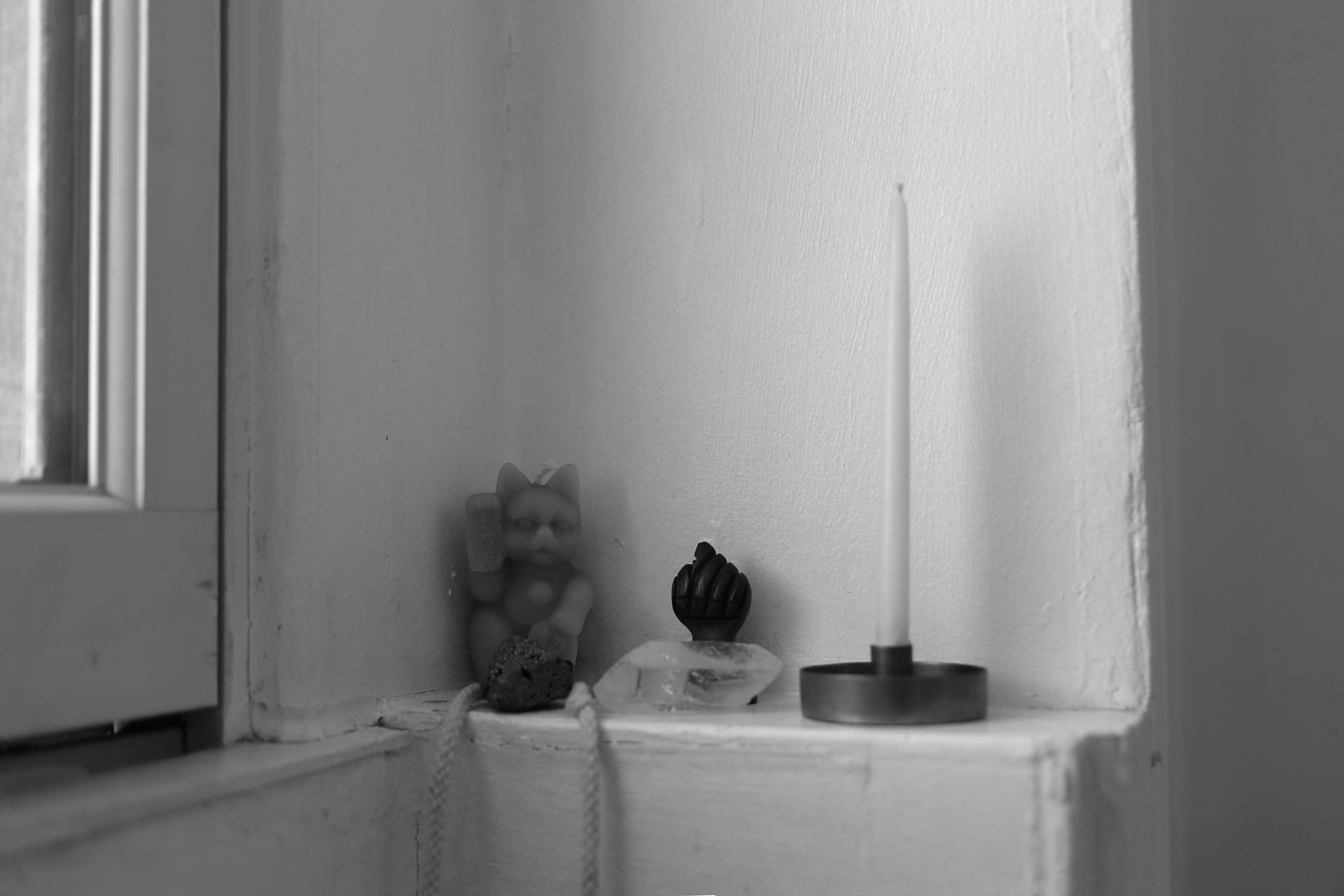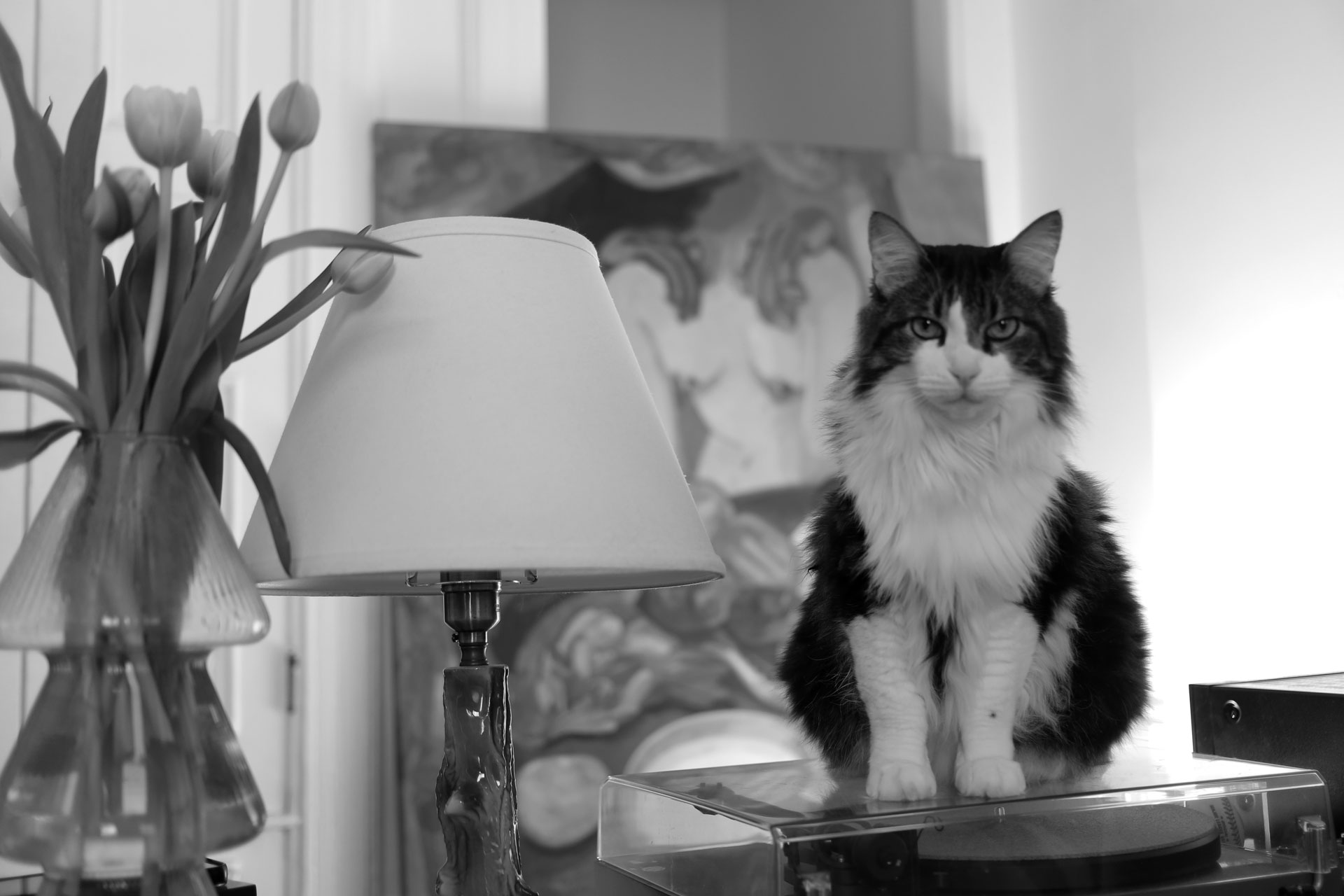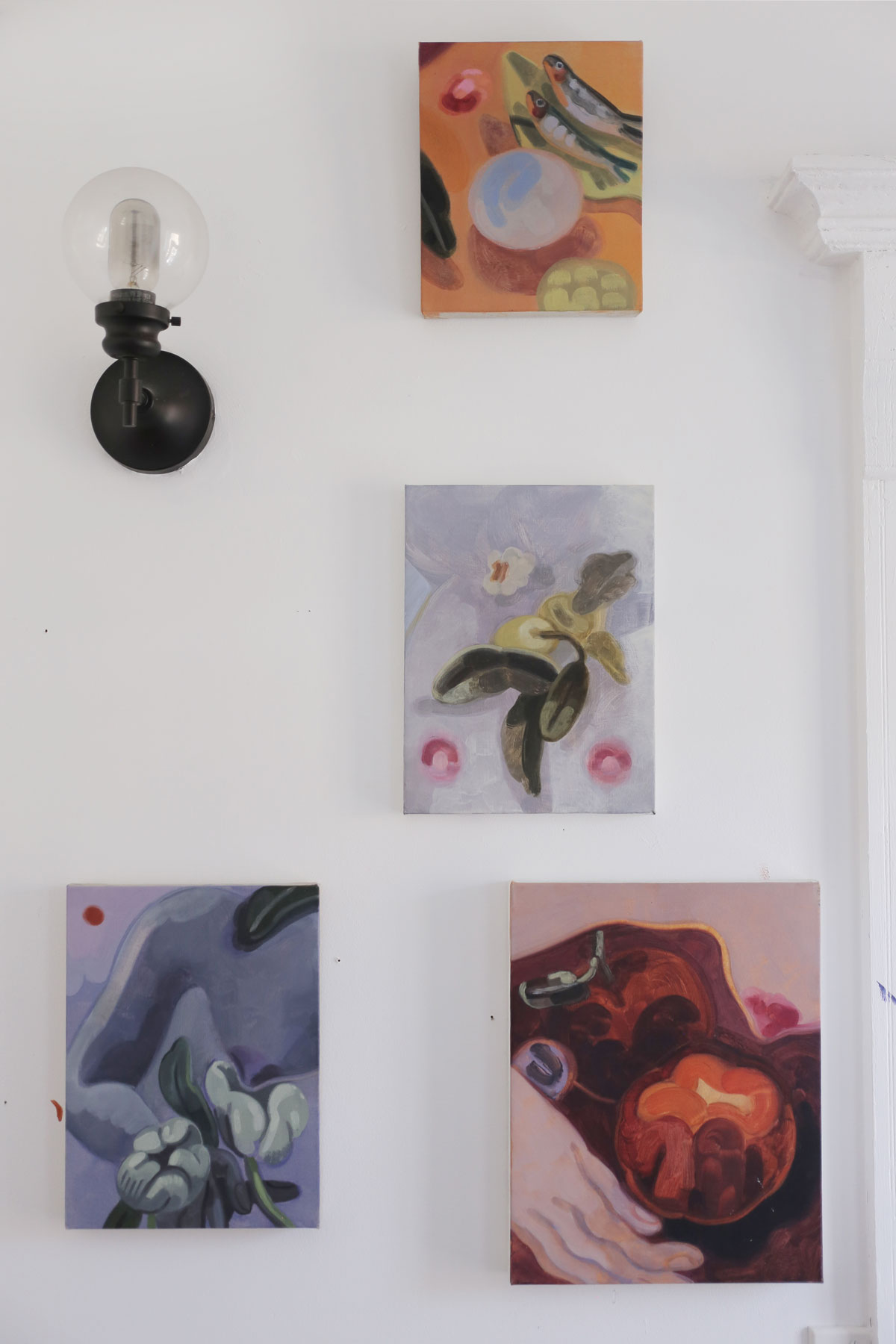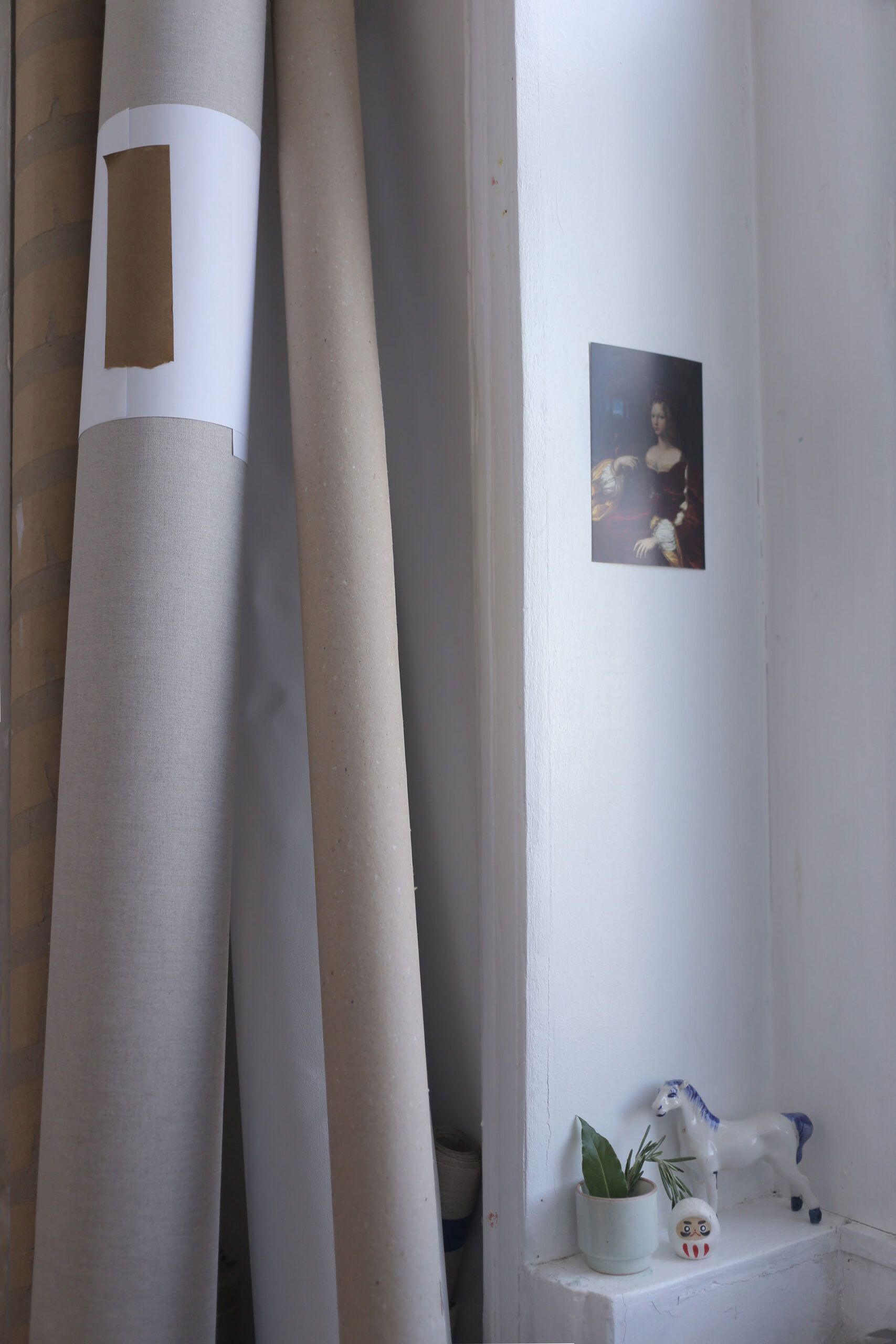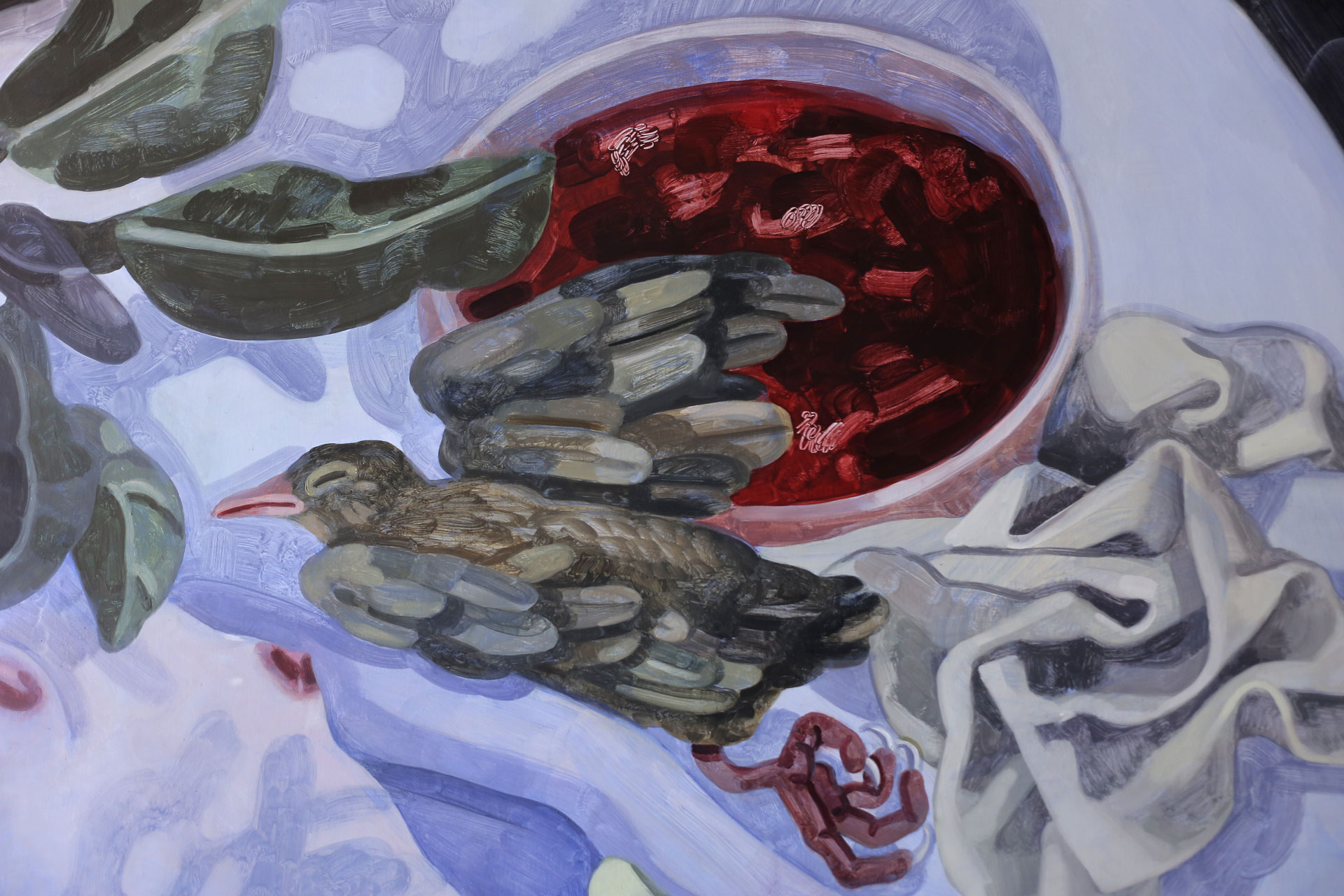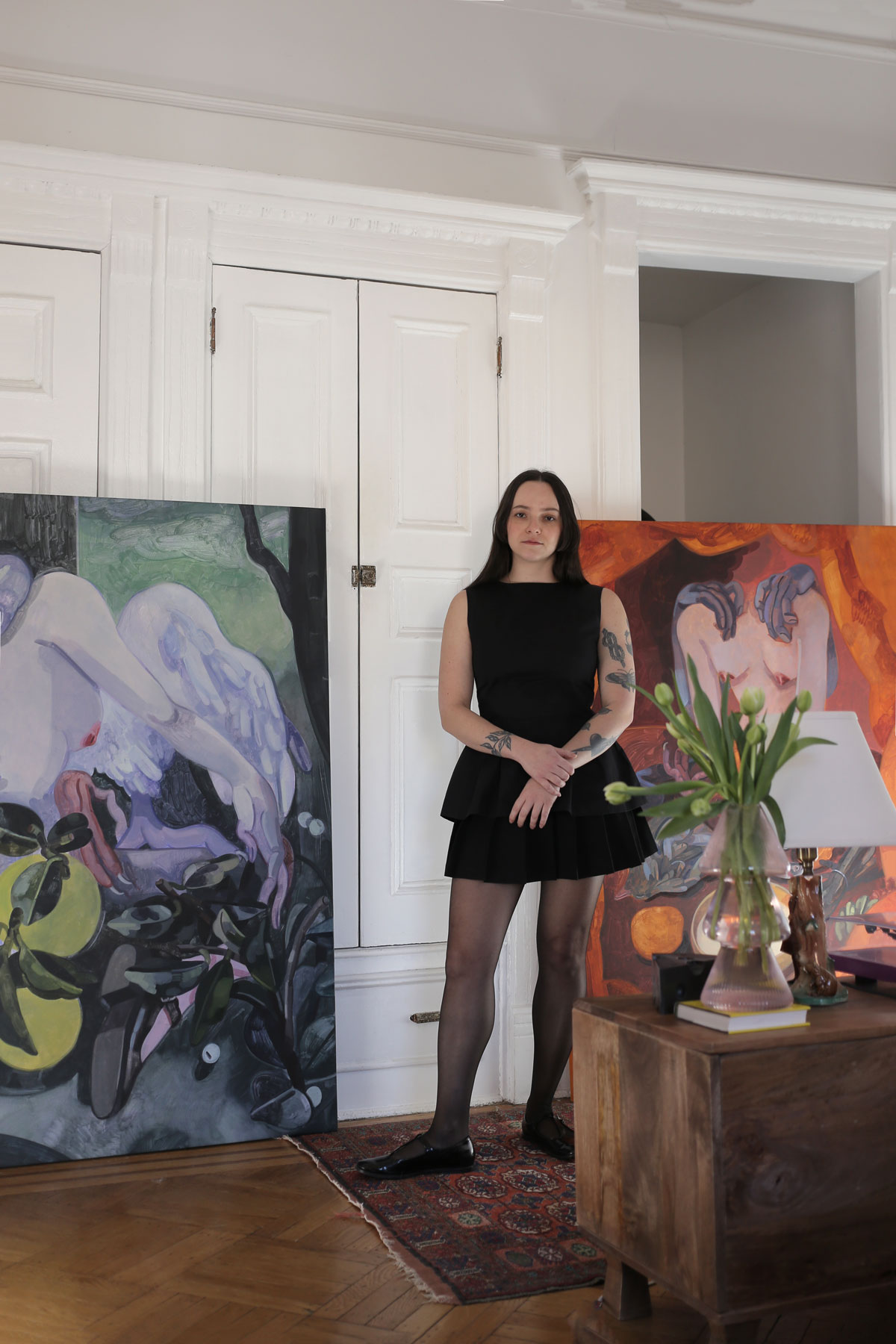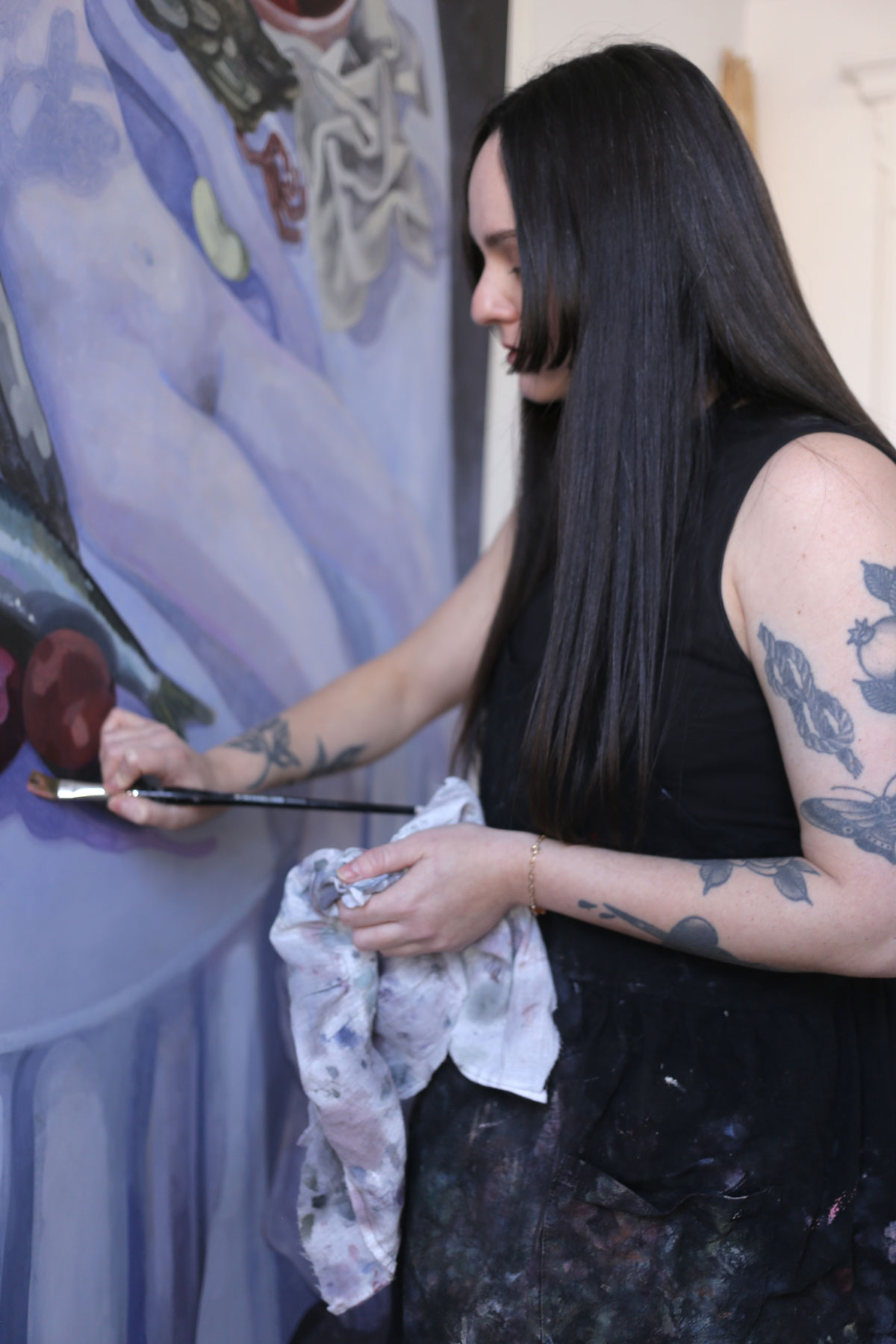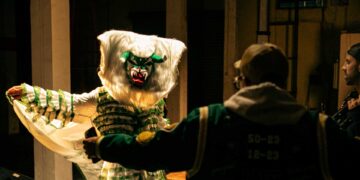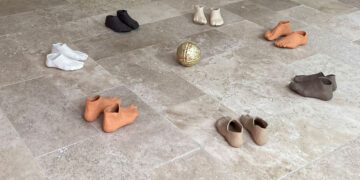1728, I was picking olives and noticed one was hollow. Inside, instead of a pit I saw two small creatures playing. They looked human, except much smaller and as they spun in circles, the bush caught fire. I have always experienced visions. Little people on my pillow before bed, spider hallucinations, dreams that come to pass in a few days, the death of a friend’s dog. Seeing God, seeing inside my body. I choose to believe in everything because it is fun, and pleasure is sacred.
When I enter the studio in the morning I light a candle, put some morning music on and start by drawing or mixing colors. I have a spiritual practice and an art practice that branches from it. I draw scenes from imagination, memory and fiction. Figures lounging, a banquet of sorts, a still life and a play, everything devouring itself while time remains still.

I currently work from a very small studio at home in Brooklyn, NY. I moved here from São Paulo in 2018 and miss Brazil more each year, specially during the cold season in NY, when the light is so low. I love blue hour, that semidarkness when things can be seen at a glance just before disappearing – if I’m inside, I like to keep the lights off until it’s pitch black, and watch as dusk slowly bathes the house in darkness. I can do this when I am drawing, but for mixing oil colors I need daylight. Every painter is a light nerd chasing after a light that keeps running. Experience is always better in memory.
My phone is full of images of fruit and little animals. Some I took, some are screenshots. I sketch what I am drawn to, and then make up some. Parts come from memory, personal experiences, a feeling. When I have a drawing I like, I move on to painting.

Once I start, I paint for 9 to 12 hours. Less than that does not feel productive, but after a long day my brain is very fried. If I start to lose focus, listening to narrative helps. When I am not in the mood for music I play an audiobook, a film I’ve seen before, or some Brazilian novela. Sometimes months later I will look at a painting and remember exactly what was happening in the story when I was painting it. I find that kind of funny specially when it’s some corny novela scene.
As I look back into my memories of fiction, I realize an important part of what makes invented worlds interesting are their systems, rules and symbols – a made-up religion within a novel for example. I find sacred art fascinating because it is narrative and so dramatic, recounting a story that has been interpreted hundreds of times through the centuries. Painting is a gateway to nostalgia. One way to cast a spell is to turn desire into an image, projecting it into the physical world to hopefully bend reality. Making art is a similar form of play.
Johan Huizinga said ”Play is a voluntary activity executed within certain fixed limits of time and place, according to rules freely accepted but absolutely binding, having its aim in itself and accompanied by a feeling of tension, joy, and the consciousness that it is ‘different’ from ‘ordinary life.’ (…) The arena, the card table, the magic circle, the temple, the stage, the screen, the court of justice, etc., are all in form and function play-grounds, i.e., forbidden spots, isolated, hedged round, hallowed, within which special rules obtain.”
So I like to imagine a place and its rules, its inhabitants and their behaviors. I can make of it whatever I want, as long as it makes sense, which is why I paint what I love most dearly or feel most strongly about. Growing up in an apartment in a small town, I spent a lot of time alone. I read books, played video games, made online friends and a lot of drawings. Some of the landscapes I visited virtually still inspire me today.
Then the brightest of lights shone from the sky and I went blind.
I woke up inside and knew it had been God. At the abbey I learned that prayer comes first, then work, and that you should treat your olive trees like children.
This was some time ago but I remember everything. I tried to paint it but before I finish it always bursts into flames.
You can find out more about Stephanie Lucchese at @stephanielucchese // stephanielucchese.com
Photos: Anita Goes



